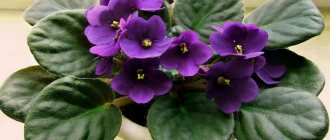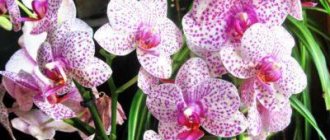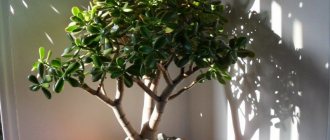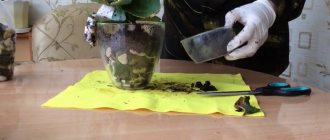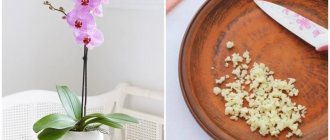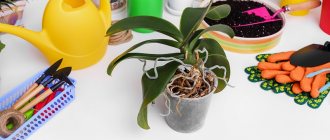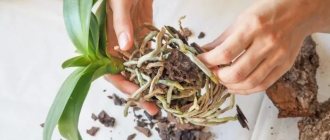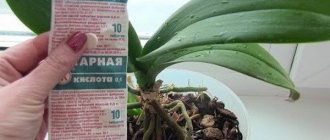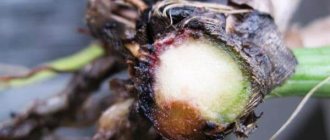German clay soil Seramis
A modern analogue of earth for healthy plants and beautiful spaces
Seramis (emphasis on I) is a natural clay soil for indoor and garden plants. It works as a natural automatic watering system, is suitable for any plants, can be reused and has no expiration date, provides comfortable gardening without earthy stains, odor and insects.
- There is a universal Seramis for orchids and succulents.
All components of the Seramis complex are produced in Germany from German, Italian and Portuguese raw materials. The soil entered the market almost 30 years ago and very quickly gained popularity in Europe. Private homes, hotels, restaurants, cafes, salons, boutiques, administrative interiors, sports complexes, offices, city lawns and garden beds - Seramis is used everywhere. In the Russian market, soil is just gaining popularity. But those phytodesigners, flower growers and decorators who have tried Seramis always return for new packaging.
What it is?
Components for Seramis are supplied by Germany. Recently, this substrate has become popular in Russia. In Western Europe, it is actively used when planting potted plants.
Read also: Rough elm - a tree with a Russian soul
Small clay granules are porous and lightweight. They actively absorb excess moisture. The soil does not lose its properties regardless of operating conditions and period.
Unlike other soil mixtures, Seramis provides good air exchange in the pot. With such a substrate, orchids feel comfortable and enjoy healthy growth and abundant flowering.
If after replanting the soil is not completely used, it must be properly stored in a dry, dark place.
We recommend watching a video about Seramis for orchids:
The Seramis complex is a substitute for natural soil for orchids. The substrate is made from baked clay and tree bark. Contains beneficial microelements NPK:
Clay granulate particles absorb watering moisture like a sponge and distribute it throughout the pot. Thanks to the safe accumulation of liquid, plants are protected from root rot.
Substrate granules of different sizes. This makes it possible to save the life of even a small shoot with undeveloped roots.
How Seramis works
- 100% replacement for earthen soil
Seramis clay soil can 100% replace ordinary soil. Porous granules of different sizes allow plants to germinate and reliably strengthen even with an underdeveloped root system. The porosity of the granules and their physical stability (they do not compact) provide air access to the roots.
- Natural automatic watering system that starts working immediately
Porous granules absorb water when watering and then gradually release it to the roots. The plant receives as much moisture as it needs. There is no risk of flooding the plant, and you can water less often. The automatic watering system begins to work immediately after transplantation. Unlike self-watering pots, you don’t have to wait for the roots to grow. Seramis is suitable for plants with any root system.
Watering regime and plant feeding
The indicator is installed directly into the root system area, so it shows the real humidity level, and not the water level in the flowerpot. And don’t be confused by the fact that the top layer of granules has dried out - the inside of Seramis is moist. You need to water 4 times less often compared to the ground. For some plants, you can reduce watering to once a month.
As in the case of ordinary soil, plants in Seramis are fed with a fertilizer suitable for the type and according to the instructions.
- Reusable and replantable
The service life of Seramis is unlimited. It does not lose its physical properties over time and does not thicken. Therefore, it can be reused as many times as needed. It is enough to rinse and bake in the oven for disinfection (if necessary).
A plant from the ground can be transplanted into Seramis at any time. It is enough to carefully remove the plant and lightly shake off the earthen lump - there is no need to remove all the soil.
Pros and cons of the substrate
Experts include the following obvious advantages of the soil:
- reducing the risk of substrate overmoistening;
- minimal risk of developing fungal infections;
- facilitating the process of plant transplantation;
- preservation of the beneficial properties of the soil during prolonged use;
- maintaining the original structure in the pot;
- good for pots;
- accelerates the growth and development of the flower;
- provides a long flowering period;
- no need to frequently change the substrate.
It is noted that Seramis can be reused by first drying the soil in the oven.
No disadvantages were found in the soil. Possible disadvantages of this product include its high cost, but the positive results of use quickly pay for the costs.
Seramis soil for orchids
A long-awaited new product - a special Seramis primer for orchids
- immediately after its appearance, it proved itself perfectly and quickly became popular among amateurs and professional orchid breeders.
Seramis soil consists of 70% special large clay granules and 30% pine bark from Portuguese forests. Plant roots are in their natural woody environment and have access to air due to the large size of the bark and granules. Plus they get enough moisture. Seramis soil is essentially a natural automatic watering system. A porous clay granule absorbs an amount of water and fertilizer equal to its own weight. And then gradually gives it to the plant.
Large granules and pieces of bark create an airy structure, providing optimal ventilation to the sensitive orchid roots and ideal water balance. You can forget about the two worst nightmares of orchid lovers: waterlogging and root rot.
Seramis soil makes replanting orchids non-traumatic for the plant and easy for you. We recommend replanting before or after the flowering stage.
Growing an orchid in a substrate
Transplanted orchids will require additional attention, since the process of adaptation to new conditions is very painful for them. After replanting, it is better to leave the pot in the same place so that the culture becomes more familiar. You need to monitor the plant daily. At first, the appearance of the orchid may cause concern, but then, with proper care, everything should return to normal.
The first watering should be done no earlier than 4-5 days later. This is due to the fact that during transplantation the root system was well saturated with moisture. Water should be watered with well-settled water at room temperature along the edges of the container. You should also monitor the humidity and temperature in the room, and protect the plant from exposure to direct sunlight and drafts.
Seramis soil for succulents
Seramis for succulents consists of clay and volcanic granules. Their porous structure works like a natural self-watering system: the pores absorb moisture and gradually release it to the roots. The mixture creates a soil texture as close as possible to the natural growing environment. The fragile root systems of succulents and cacti take root easily—even the tiniest roots can get caught in the porous granules. pH - 6.9.
Photo by Katya
@ succulents_one_love
Landing Features
Planting an orchid in the ground is a responsible procedure for which you need to prepare in advance. In addition to Seramis primer you will need:
- pruning shears or scalpel;
- instrument disinfectant;
- a transparent plastic pot slightly larger than before;
- bactericidal preparations for processing sections (activated carbon, cinnamon).
The replanting process should begin by removing the plant from the old container. This must be done carefully so as not to damage the root system. If possible, it is better to cut the pot. More often, owners place the orchid along with the container in warm water, and then easily remove the plant.
Next, you should carefully free the roots from the old soil by rinsing them with water. This is necessary to thoroughly inspect the root system for dry or rotten elements, pests or diseases. If aphids, thrips or powdery mildew are detected, the flower must be treated with special preparations. This will save the life of the culture.
Store Seramis in a dark, cool place, out of the reach of children. The package containing the primer should be kept tightly closed. In this condition the product will last a long time.
If the root system has old empty bulbs, rotten or dry roots, they are carefully cut off with a sharp instrument, having previously disinfected it. After this, the roots should be dried for 8-10 hours. During this time, prepare the container - treat the new pot (pour boiling water over it), and then lay out a layer of drainage.
When the plant is dry, you should carefully place it in the pot, without pressing the roots, and gradually fill the space around the orchid with substrate. In this case, there is no need to cover the aerial roots with soil and compact the plant.
Advantages of working with Seramis for flower growers and professionals
- Caring for plants.
In Seramis, everyone can grow a healthy and beautiful plant. This is a ready-made and well-thought-out system.
- The period of use is unlimited
. Seramis can be used an unlimited number of times. It does not compact and does not deteriorate over time.
- Easy to use
. With the Seramis system, caring for plants will require a minimum of time and effort: infrequent watering, no diseases, no need to remove soil drips or scattered soil, no need to loosen, easy to replant.
- Liberty
. Some plants in Seramis can be watered 1-2 times a month. Ideal for travelers and those who frequently go on business trips.
- Unable to fill
. The maximum volume of water when watering is ¼ of the volume of granulate. However, even if there was more water, the risk of plant death from overwatering is minimal. Clay absorbs excess water and, unlike soil, does not create favorable conditions for decay processes.
- No unpleasant smell
. Seramis eliminates the appearance of unpleasant odors and insects, which happens with the soil or with self-watering flowerpots in which the water “goes rotten.”
- Safe for children
. The Seramis soil itself is sterile, and the concentration of mineral fertilizers that accumulate in the granules is potentially harmless.
- Plant health
. If a diseased plant grows in Seramis, it is enough to rinse the granules and process them in the oven at 180°C for 30 minutes.
- Not of interest to animals
. Practice has shown that dogs and cats do not show interest in Seramis soil. The exception is your pet’s special hobby. In any case, removing Seramis is simpler and easier than removing soil.
- Aesthetic component
. Seramis, even as mulch, prevents the evaporation of moisture from the surface of the earth, plus it looks beautiful.
All the pros and cons
"Ceramis", like any other primer, has its advantages and disadvantages. It has many advantages. These include:
- Once you have purchased the substrate, you can use it for more than one year, even if the flower you grew died;
- does not need periodic replacement, as is the case with soil;
- granular soil allows you to grow flowers in beautiful decorative flower pots;
- when replanting, you can add the required amount, which allows you to use it sparingly;
- “Ceramis” allows you to forget about problems with flooded window sills or dirt on them, since it does not require the use of pots with pallets;
- Using this soil substitute, you don’t need to worry about flooding the flower with water;
- the use of granular soil allows you to protect the plant from mold or harmful insects;
- the balanced composition promotes rapid flower growth, without the need to apply additional fertilizers;
- If you want to transfer your flowers to it, the presence of land is allowed.
"Ceramis" is not only easy to use, but also very beneficial for the plant. Fine clay granules absorb water through numerous pores and hold it there. Plants have the opportunity to receive nutrition and moisture as needed. This feature allows you to reduce the number of waterings to once every two or even three weeks. This also makes it possible to leave your pets unattended for a long time. Using a humidity indicator will allow you to water the flower in a timely manner.
The granulate has a stable structure and does not compact over time, so the well-being of the roots is always ensured - fresh air is constantly supplied to them, which contributes to the special growth and beautiful appearance of the plant. Granules of different sizes allow even the smallest and weakest roots to develop freely.
With Seramis you can quickly and cleanly replant flowers at any time of the year, choosing any pot or flowerpot.
Many users cite the high cost as a disadvantage. However, if we take into account the period of use and the cost of purchase, such soil turns out to be much cheaper than its analogues or the usual soil.
